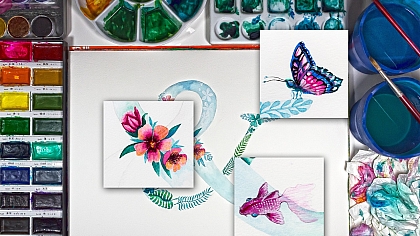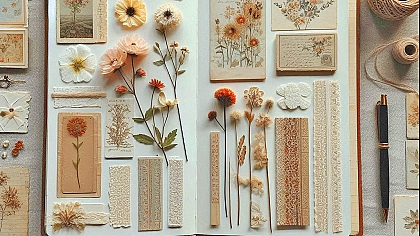
Mastering AI Art: Tips and Tricks for Artists Using AI Image Generators
Definition of AI Art
Artificial Intelligence (AI) art is a fascinating intersection of technology and creativity where machines are used to generate artwork. Unlike traditional art, which relies solely on the human artist's skills and imagination, AI art uses algorithms and computational power to produce visual pieces. These algorithms, often based on deep learning and neural networks, can analyze vast amounts of data to create images, imitating or innovating on various artistic styles.
Importance of AI in Modern Art
The advent of AI in the art world represents a significant shift in how art is conceived, produced, and appreciated. AI enables artists to explore new dimensions and techniques that were previously unimaginable. This integration of technology and art offers unprecedented creative possibilities, breaking conventional boundaries and allowing artists to push the limits of their imagination.
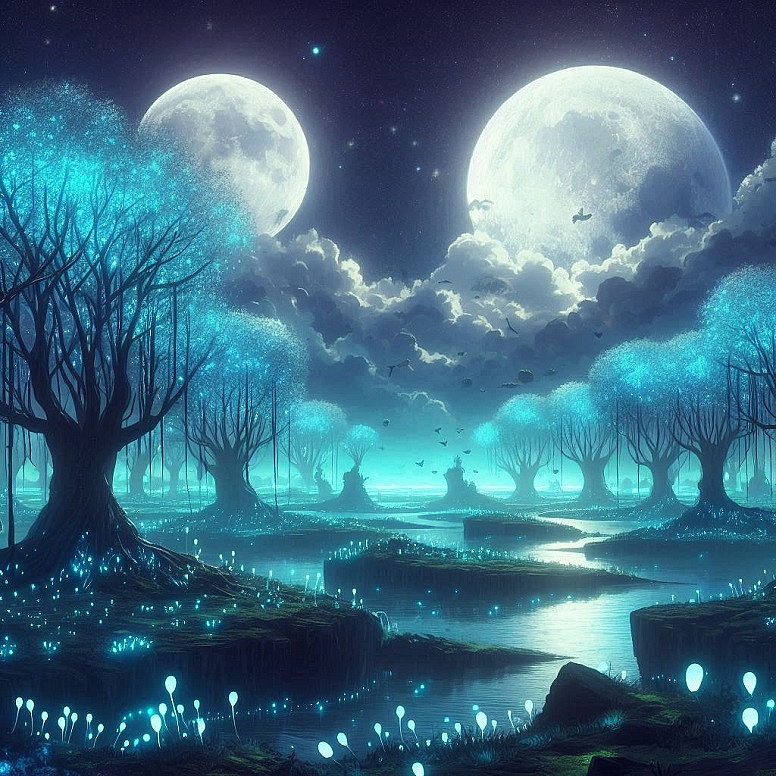
AI art is not just about creating aesthetically pleasing images; it also sparks important discussions about the nature of creativity, the role of the artist, and the potential of technology to transform cultural production. By embracing AI, artists can collaborate with machines to produce unique artworks that reflect human ingenuity and computational prowess.
Overview of AI Image Generators
AI image generators are sophisticated tools that use machine learning algorithms to create images from scratch or modify existing ones. These tools can generate art based on specific inputs or prompts provided by the user, ranging from simple descriptions to complex datasets. Some of the most popular AI image generators include:
- DALL-E: Developed by OpenAI, DALL-E can generate detailed images from textual descriptions, showcasing impressive creativity and variety.
- DeepArt: Known for transforming photos into works of art in various styles, DeepArt uses neural networks to mimic the techniques of famous painters.
- Artbreeder: This platform allows users to blend images and create new variations by leveraging the power of generative adversarial networks (GANs).
AI image generators have democratized art creation, making it accessible to a broader audience. Artists, designers, and hobbyists can now
produce high-quality artwork without extensive training or technical expertise. These tools serve as both creative assistants and sources of
inspiration, enabling users to experiment with different styles, genres, and concepts.
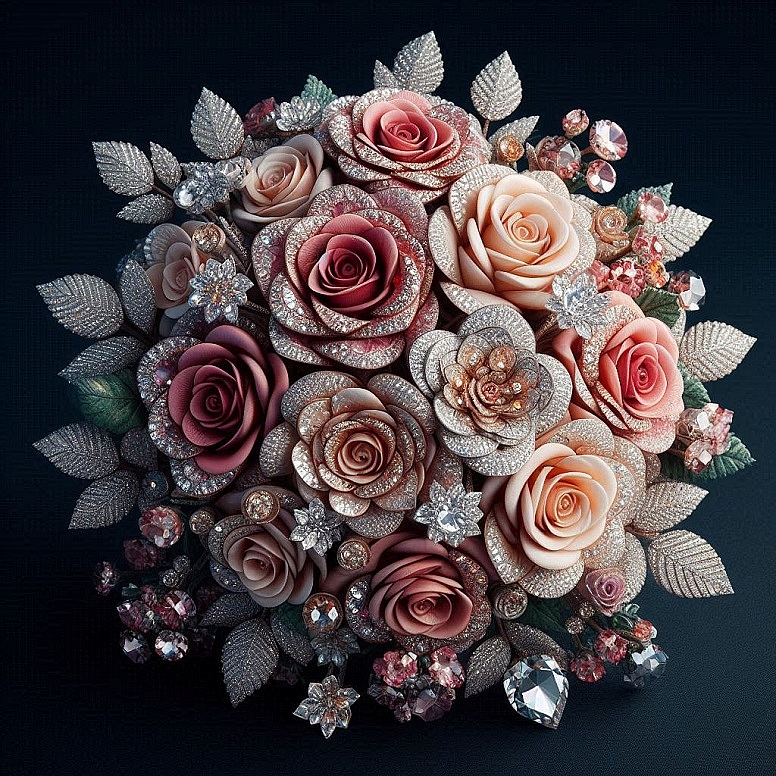
Getting Started with AI Art
Choosing the Right AI Image Generator
Selecting the right AI image generator is crucial for your artistic journey. Different tools offer unique features and capabilities, so understanding your needs and goals is essential. Here are some factors to consider when choosing an AI image generator:
- Purpose and Style: Identify the type of artwork you want to create. Are you interested in abstract art, realistic images, or a specific style like cubism or impressionism? Some generators are better suited for certain styles.
- Ease of Use: Evaluate the user interface and ease of navigation. Beginners may prefer tools with intuitive interfaces and detailed tutorials.
- Customization and Control: Look for tools that allow a high degree of customization and control over the output. The ability to tweak parameters and refine results can significantly enhance your creative process.
- Community and Support: Consider the availability of user communities and customer support. Active communities can provide valuable tips, feedback, and inspiration.
Some popular AI image generators to consider are:
- DALL-E: Ideal for creating imaginative and diverse images from textual descriptions.
- DeepDream: Known for its psychedelic and abstract outputs, perfect for experimental and avant-garde art.
- Artbreeder: Excellent for blending images and exploring new variations with user-friendly controls.
Setting Up Your Workspace
A well-organized workspace can greatly enhance your productivity and creativity when working with AI art. Here are some tips for setting up your workspace:
- Hardware Requirements: Ensure your computer meets the hardware requirements of your chosen AI image generator. High-performance GPUs can significantly speed up the rendering process.
- Software and Tools: Install necessary software, including graphic design programs (like Photoshop or GIMP) for post-processing, and ensure you have reliable internet access for online tools.
- Ergonomic Setup: Maintain an ergonomic setup with a comfortable chair, desk, and proper lighting to reduce strain during long working sessions.
- Inspiration Board: Create an inspiration board with images, sketches, and notes to keep your creative ideas flowing.
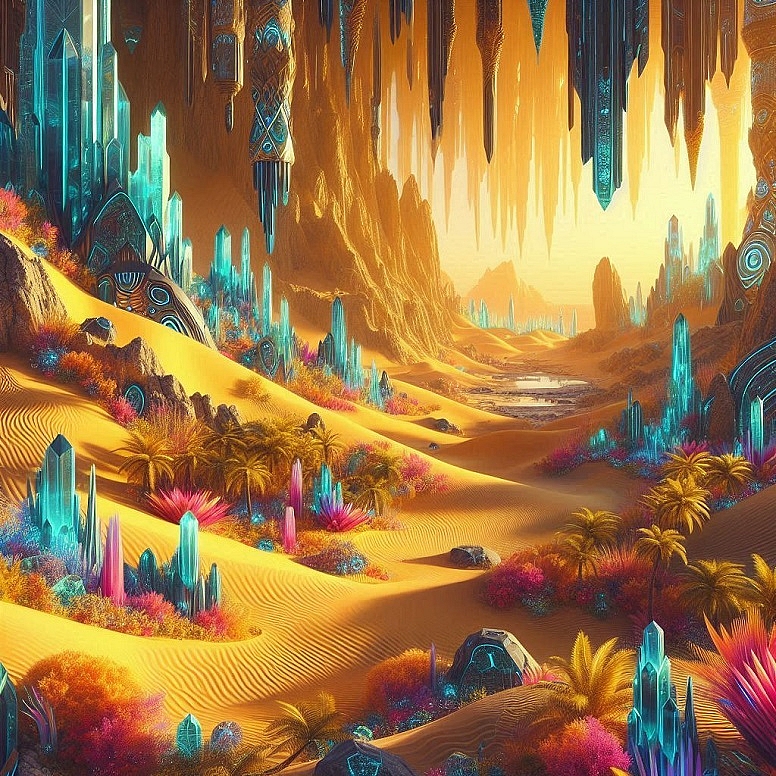
Basic Terminology and Concepts
Understanding the basic terminology and concepts of AI art will help you navigate the field more effectively. Here are some key terms:
- Neural Networks: Computational models inspired by the human brain, used by AI to recognize patterns and generate images.
- Generative Adversarial Networks (GANs): A class of neural networks consisting of two models (generator and discriminator) that work together to create realistic images.
- Deep Learning: A subset of machine learning involving neural networks with many layers, enabling the generation of complex and high-quality images.
- Prompt: The input (text, image, or data) provided to the AI generator to produce artwork.
- Latent Space: The multi-dimensional space where the AI model represents different features and attributes of the images it generates.
Familiarizing yourself with these terms will give you a better grasp of how AI image generators work and how you can leverage them to create stunning art.
Understanding AI Image Generators
How AI Image Generators Work
AI image generators use advanced algorithms and neural networks to create images. Here’s a breakdown of the process:
-
Data Collection: AI models are trained on large datasets containing numerous images across various styles and subjects. This data helps the AI learn and understand different artistic elements and techniques.
-
Training the Model: During training, the AI model analyzes the images in the dataset, identifying patterns, shapes, colours, and textures. The model uses this information to develop a representation of different artistic styles.
-
Generating Images: Once trained, the AI model can generate new images based on input prompts. For example, a text-based prompt describing a scene or style will guide the AI in creating a corresponding image. The model uses its learned knowledge to produce an image that aligns with the prompt.
-
Refinement: Some AI image generators include refinement stages where the generated image is further processed to improve quality and coherence. This might involve adjusting colours, enhancing details, or correcting any distortions.
Different Types of AI Models
AI image generators rely on various types of models, each with its strengths and applications:
-
Convolutional Neural Networks (CNNs): CNNs are particularly effective for image recognition and generation tasks. They use layers of filters to detect different features in images, making them ideal for producing detailed and complex artworks.
-
Generative Adversarial Networks (GANs): GANs consist of two neural networks—the generator and the discriminator—that work together. The generator creates images, while the discriminator evaluates them. This adversarial process continues until the generator produces high-quality images that can fool the discriminator.
-
Variational Autoencoders (VAEs): VAEs are used for generating images that closely resemble the training data. They work by encoding images into a latent space and then decoding them back, allowing for the creation of new images with similar characteristics.
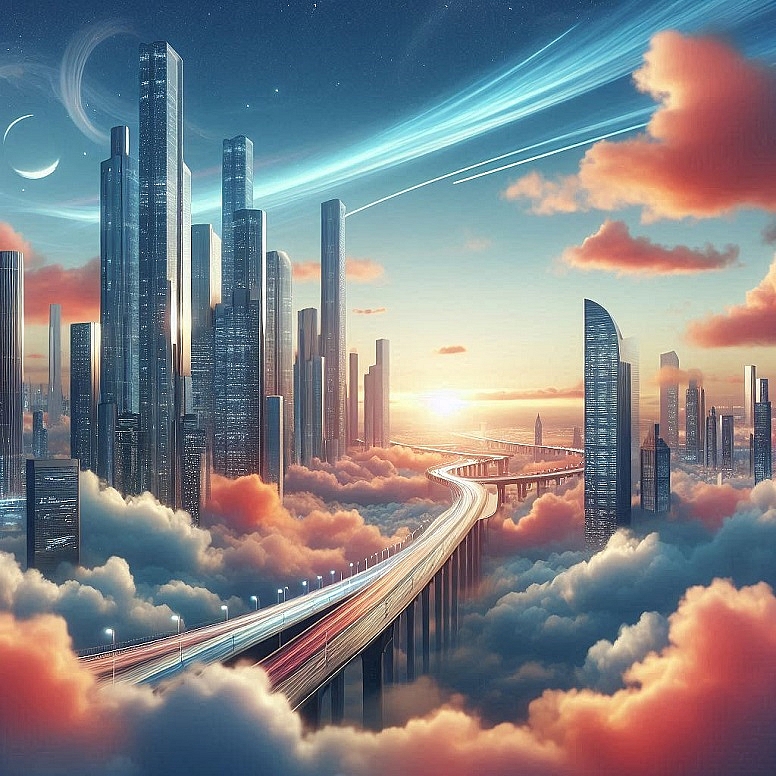
Commonly Used AI Image Generators
Here are some of the most popular AI image generators that artists use:
-
DALL-E: Developed by OpenAI, DALL-E can create images from textual descriptions. It excels at generating imaginative and detailed scenes based on complex prompts.
-
DeepArt: This tool is known for transforming photos into artworks in the style of famous painters. It uses deep learning algorithms to mimic the techniques of artists like Van Gogh, Picasso, and Monet.
-
Artbreeder: Artbreeder allows users to blend images and create new variations by using GANs. It offers an intuitive interface where users can adjust different attributes to explore diverse artistic possibilities.
-
RunwayML: RunwayML provides a platform for artists to use various AI models for creative projects. It supports multiple models, including GANs and VAEs, and integrates with popular design tools for seamless workflows.
Understanding these tools and their underlying models will empower you to choose the right generator for your artistic needs and make the most of their capabilities.
Creative Techniques in AI Art
Prompt Engineering
Prompt engineering is the art of crafting precise and effective inputs to guide AI image generators in producing desired outputs. The quality and specificity of your prompt can significantly influence the final image. Here are some tips for effective prompt engineering:
- Be Specific: Clearly describe the scene, objects, and style you want. Instead of "a forest," try "a dense, misty forest at dawn with sunlight filtering through the trees."
- Use Keywords: Include important keywords that highlight the style or mood you are aiming for, such as "surreal," "impressionist," "vivid colours," or "minimalist."
- Experiment: Don’t hesitate to try different variations of prompts. Slight changes in wording can lead to surprisingly different results. For instance, compare "a futuristic cityscape" with "a dystopian futuristic cityscape."
- Iterate: Generate multiple images from similar prompts and refine them based on what works best. This iterative process helps in honing the prompts to get closer to the desired outcome.
Combining Multiple AI Tools
Leveraging multiple AI tools can enhance the complexity and richness of your artwork. Here’s how you can combine various AI tools effectively:
- Layering Techniques: Use different AI generators to create various layers of your artwork. For example, one tool can generate the background, another can add specific elements, and yet another can apply a final stylistic touch.
- Blending Styles: Generate images in different styles using various tools and then blend them. For instance, create a base image with DALL-E and apply a painterly effect with DeepArt.
- Sequential Processing: Apply a sequence of AI models to refine an image progressively. Start with a broad concept using a general model and then use more specialized tools for detailed enhancements.
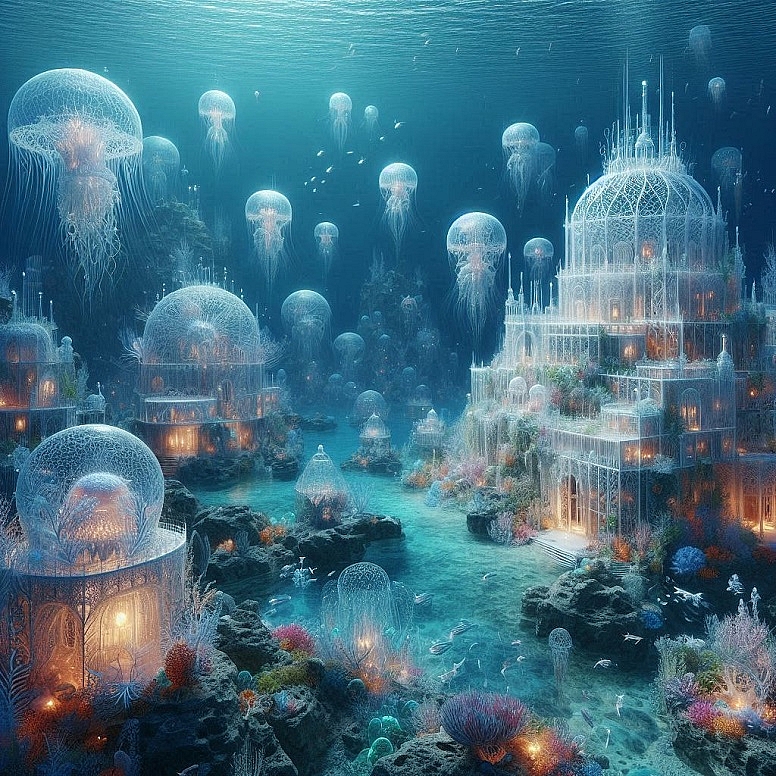
Experimenting with Styles and Formats
Experimentation is key to discovering unique artistic expressions. Here are some ways to experiment with styles and formats:
- Style Transfer: Use tools that can transfer the style of one image to another. This allows you to apply the techniques of famous artists to your compositions.
- Abstract vs. Realistic: Toggle between abstract and realistic styles to see how different approaches can alter the perception and impact of your artwork.
- Mixed Media: Combine AI-generated images with traditional media. Print your AI art and add hand-painted details, or use physical textures and scan them back into a digital format for further AI enhancement.
- Resolution and Aspect Ratios: Experiment with different resolutions and aspect ratios. High-resolution images allow for more detailed work, while unconventional aspect ratios can create unique visual dynamics.
Collaborative Creation
Collaboration can also play a significant role in AI art. Working with other artists or even non-artists can bring fresh perspectives and ideas:
- Crowdsourced Input: Collect prompt ideas from a community or audience to explore diverse concepts.
- Co-creation: Partner with other artists to blend their styles and techniques with AI-generated elements, creating a unique fusion of human and machine creativity.
- Feedback Loops: Engage with other AI artists to critique and refine each other’s work, leading to continuous improvement and innovation.
By mastering these creative techniques, you can fully harness the power of AI image generators to expand your artistic horizons and produce groundbreaking art.
Enhancing Your AI Art
Post-Processing Techniques
Post-processing is a crucial step in refining AI-generated images, allowing artists to enhance and polish their work. Here are some effective post-processing techniques:
- Colour Correction: Adjust the colours to ensure they are vibrant and balanced. Tools like Adobe Photoshop, GIMP, or Lightroom can help you fine-tune colour saturation, contrast, and brightness.
- Detail Enhancement: Sharpen the image to bring out fine details. Use high-pass filters or sharpening tools to emphasize textures and edges.
- Noise Reduction: AI-generated images sometimes contain noise or artefacts. Use noise reduction filters to smooth out the image while preserving important details.
- Layer Blending: Combine multiple AI-generated images using layer blending techniques. This allows you to merge different elements seamlessly and create a cohesive final piece.
- Brush Strokes and Texture: Add digital brush strokes or textures to give the image a more organic feel. This can make AI-generated art appear more hand-crafted and personal.
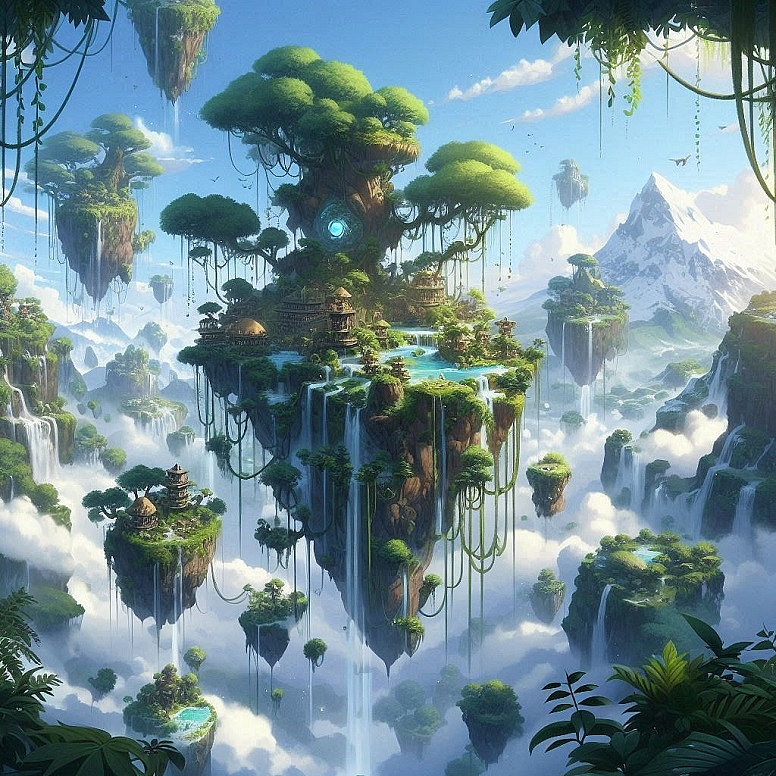
Integrating Traditional Art with AI Art
Blending traditional art techniques with AI-generated images can result in unique and captivating artworks. Here’s how you can integrate the two:
Hand-Painting Over AI Art: Print your AI-generated images and add hand-painted details using traditional mediums like oil, acrylic, or watercolour. This combination can create a rich, multi-layered effect.
Scanning Traditional Art: Scan your hand-drawn sketches, paintings, or textures and use AI tools to enhance or transform them. This can bring new life to your traditional artworks.
Mixed Media Collages: Create physical collages using prints of AI-generated images and traditional art pieces. Combine different textures, papers, and materials for a mixed-media artwork that blends digital and analogue methods.
Digital Painting Tools: Use digital painting tools and tablets to add intricate details and textures to AI-generated images, merging the precision of digital tools with the expressiveness of traditional painting.
Using Software Tools for Enhancement
Several software tools can help you enhance and refine your AI-generated art:
Adobe Photoshop: A versatile tool for image editing, offering a wide range of features for colour correction, retouching, compositing, and more.
GIMP: A free, open-source alternative to Photoshop, GIMP provides robust editing capabilities suitable for post-processing AI-generated images.
Corel Painter: Known for its realistic brush simulations, Corel Painter allows you to add hand-painted effects to digital images, making it ideal for integrating traditional art techniques.
Topaz Labs: This suite of AI-powered tools includes applications for noise reduction, sharpening, and enhancing image resolution, helping you improve the quality of your AI art.
Procreate: A popular app for digital painting on iPads, Procreate offers intuitive tools for adding fine details and textures to your images.
By utilizing these post-processing techniques and software tools, you can elevate the quality of your AI art, ensuring it meets your creative vision and stands out in the ever-evolving world of digital art.
Ethical Considerations in AI Art
Copyright Issues
The integration of AI in art creation raises significant copyright and intellectual property (IP) concerns. Understanding these issues is crucial for the responsible use and protection of your work:
Ownership of AI-Generated Art: One of the main questions is who owns the rights to AI-generated art—the user who inputs the prompt, the developer of the AI, or both? Generally, the user holds the rights, but this can vary based on the tool’s terms of service.
Use of Training Data: AI models are trained on vast datasets that often include copyrighted material. The legality of using such datasets for generating new art is still a grey area. Ensure the tools you use have transparent and ethical data usage policies.
Derivative Works: When AI-generated art closely resembles existing works, it can be considered a derivative work, which may infringe on the original artist's copyright. Be cautious and avoid prompts that might generate such contentious outputs.
Bias and Fairness in AI Art
AI models can inadvertently perpetuate biases present in their training data. As an artist, being aware of these biases and striving for fairness in your AI art practice is essential:
Recognizing Bias: Understand that AI models can reflect societal biases related to race, gender, culture, and more. Analyze your outputs for any unintended biases and take steps to address them.
Inclusive Datasets: Prefer tools that use diverse and inclusive datasets. This helps in generating more balanced and fair representations in AI art.
Responsible Prompting: Craft prompts consciously to avoid reinforcing stereotypes or harmful biases. For example, avoid prompts that might unintentionally depict marginalized groups in a negative light.
Responsible Use of AI Tools
The responsible use of AI tools in art creation involves ethical considerations beyond just copyright and bias. Here are some principles to guide your practice:
Transparency: Be transparent about the use of AI in your art. Acknowledge the tools and techniques used in creating your works, especially when presenting them in public or selling them.
Environmental Impact: AI models, particularly those involving deep learning, can consume significant computational resources, leading to a high carbon footprint. Whenever possible, opt for energy-efficient tools and practices.
Purpose and Impact: Consider the broader impact of your AI art. Avoid using AI-generated art in ways that might mislead, deceive, or harm others. Use your art to contribute positively to cultural and social discourse.
By addressing these ethical considerations, you can ensure that your AI art practice is not only creative and innovative but also responsible and fair.
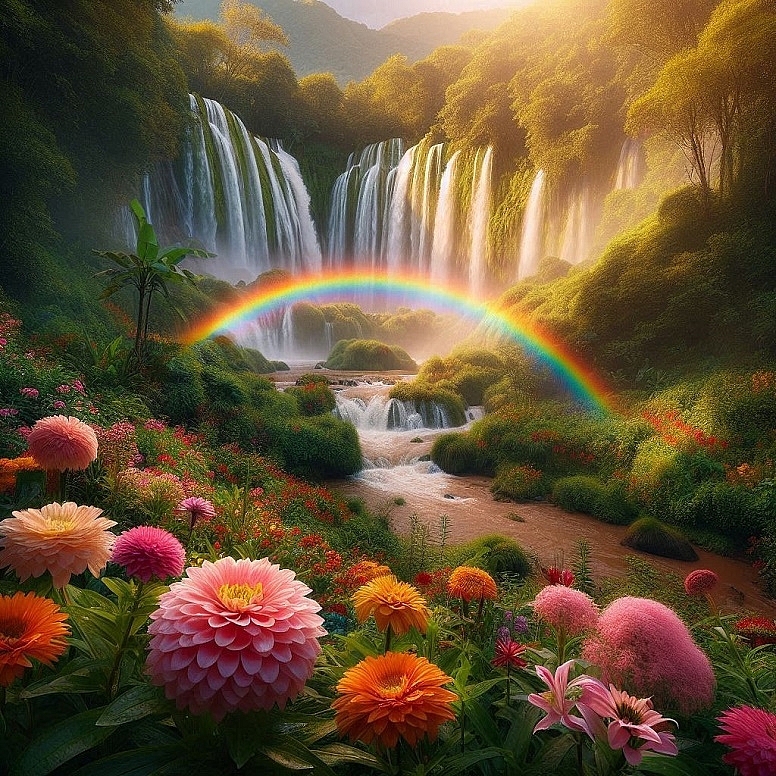
Building Your AI Art Portfolio
Curating Your Best Works
A well-curated portfolio showcases your skills and artistic vision, helping you stand out to potential clients, collaborators, and audiences. Here’s how to effectively curate your AI art portfolio:
Select Your Best Pieces: Choose artworks that best represent your style and creativity. Focus on quality over quantity, selecting pieces that highlight your technical skills and unique artistic voice.
Diverse Range: Include a diverse range of styles, themes, and techniques to demonstrate your versatility. Show how you can work with different prompts and tools to create varied outcomes.
Consistency: While diversity is important, ensure there is a consistent thread that ties your work together. This could be a particular aesthetic, theme, or conceptual approach that defines your artistic identity.
High-Quality Images: Use high-resolution images to present your work professionally. Ensure the colours are accurate and the details are sharp, giving viewers the best possible impression of your art.
Mastering AI art is a journey marked by creativity, experimentation, and ethical considerations. With the right tools and techniques, artists can harness the power of AI image generators to unlock new realms of artistic expression. By pushing the boundaries of traditional art and embracing the possibilities offered by AI, artists can create captivating artworks that challenge perceptions and inspire audiences. As AI continues to evolve, so too will the possibilities for artistic innovation. Embracing this technology while upholding ethical standards ensures that AI art remains a vibrant and meaningful contributor to the cultural landscape.
